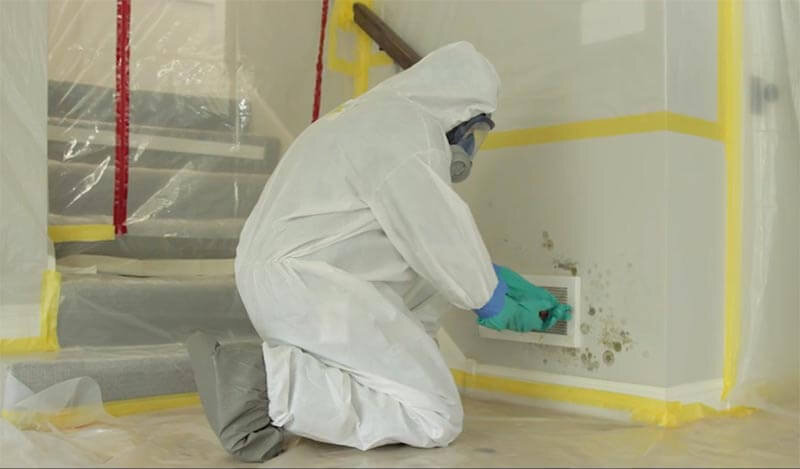Finding Post Remediation Inspection Near Me Solutions
Finding Post Remediation Inspection Near Me Solutions
Blog Article
Expert Tips for Post Mold And Mildew Remediation Success
In the world of mold and mildew remediation, effectively eradicating mold and mildew is just half the fight; the true difficulty hinges on stopping its reappearance. Post-remediation efforts play a critical role in ensuring a mold-free atmosphere in the long-term. By sticking to skilled tips and finest methods, individuals can safeguard their spaces against mold rebirth and maintain a healthy and balanced indoor environment. It remains in this stage of the removal process that attention to detail and positive procedures truly make a difference.
Display Humidity Degrees Regularly
After finishing mold and mildew removal treatments, keeping optimum moisture levels is essential to stop mold re-growth and guarantee a healthy and balanced indoor environment. High moisture degrees above 60% produce a conducive environment for mold to grow, making routine checking a positive step to avoid any future mold and mildew issues.
Furthermore, developing a regular schedule for humidity checks, specifically in high-risk locations such as kitchens, cellars, and shower rooms, is a positive method to mold prevention. By regularly checking moisture levels, home owners can successfully minimize the risk of mold reoccurrence and maintain a healthy interior setting post-remediation.
Conduct Thorough Inspections Post-Remediation
Complying with the conclusion of mold and mildew remediation procedures, it is crucial to carry out detailed inspections to confirm the performance of the removal procedure. These post-remediation assessments are essential in making certain that the mold problem has actually been successfully attended to which there is no reappearance or remaining mold growth. Examinations need to be accomplished by qualified experts who have know-how in determining mold and mildew and analyzing interior air quality.
During these evaluations, different approaches such as aesthetic assessments, air tasting, and surface area sampling might be employed to completely review the remediated areas. Visual analyses include a comprehensive inspection of the facilities to examine for any kind of visible signs of mold growth or water damages. Air tasting aids in figuring out the air-borne mold spore degrees, while surface sampling can find mold and mildew particles on surface areas.
Implement Proper Air Flow Techniques
After making sure the performance of the mold and mildew remediation procedure via extensive inspections, the following essential action is to focus on implementing appropriate air flow approaches. Appropriate air flow is necessary in avoiding mold and mildew reoccurrence by regulating wetness degrees and promoting air flow.
Appropriate ventilation not just aids in preventing mold growth yet also contributes to the general health and comfort of occupants. By guaranteeing adequate air flow throughout the residential property, you can decrease the danger of mold and mildew regrowth and develop a healthier living environment.

Use Mold-Resistant Products for Repairs
To improve the lasting effectiveness of mold remediation initiatives, including mold-resistant products for repair services is crucial in alleviating the danger of future mold development. Mold-resistant products are designed to withstand wetness and hinder mold development, making them an important selection for locations prone to wetness and humidity. When repairing areas affected by mold, utilizing products such as mold-resistant drywall, mold-resistant paints, and mold-resistant caulking can help avoid mold recurrence.
Mold-resistant drywall is a superb choice to standard drywall in areas like shower rooms and cellars where wetness degrees are greater. This kind of drywall has an unique finish that resists mold growth also when subjected to damp problems. Furthermore, using mold-resistant paints having antimicrobial representatives can additionally prevent mold development on wall surfaces and ceilings.
In areas where wetness is usual, such as bathroom Source and kitchens, using mold-resistant caulking around sinks, windows, and tubs can assist secure out water and stop mold and mildew from taking hold in fractures and crevices. By buying these mold-resistant products during repairs post-remediation, you can considerably reduce the likelihood of future mold issues and keep a much healthier indoor atmosphere.
Maintain Sanitation and Address Water Issues
After mold and mildew removal, it is crucial to preserve a clean setting to prevent the regrowth of mold. Leaks, water intrusion, or high humidity levels can create the best reproduction ground for mold and mildew, so it is vital to fix any water-related problems right away.
To keep tidiness, consider utilizing HEPA filters in vacuums and air purifiers to catch mold and mildew spores and stop their circulation airborne. Furthermore, making sure appropriate air flow in locations prone to moisture accumulation, such as shower rooms and cooking areas, can help keep moisture levels in check. By remaining watchful concerning cleanliness and resolving water problems immediately, you can efficiently protect against mold reinfestation and maintain a healthy interior setting.
Verdict

In the realm of mold and mildew remediation, efficiently removing mold is just half the battle; the true difficulty lies in preventing its reappearance. After finishing mold and mildew remediation procedures, preserving ideal moisture degrees is critical to protect against mold and mildew re-growth and guarantee a healthy interior setting. High humidity degrees over 60% develop a helpful setting for mold to flourish, making routine monitoring a proactive action to prevent any kind of future mold problems.
To enhance the long-lasting effectiveness of mold remediation efforts, incorporating mold-resistant products for repair services is essential in reducing the threat of future mold and mildew development. After mold remediation, that site it is crucial to maintain a clean environment to avoid the regrowth of mold.
Report this page